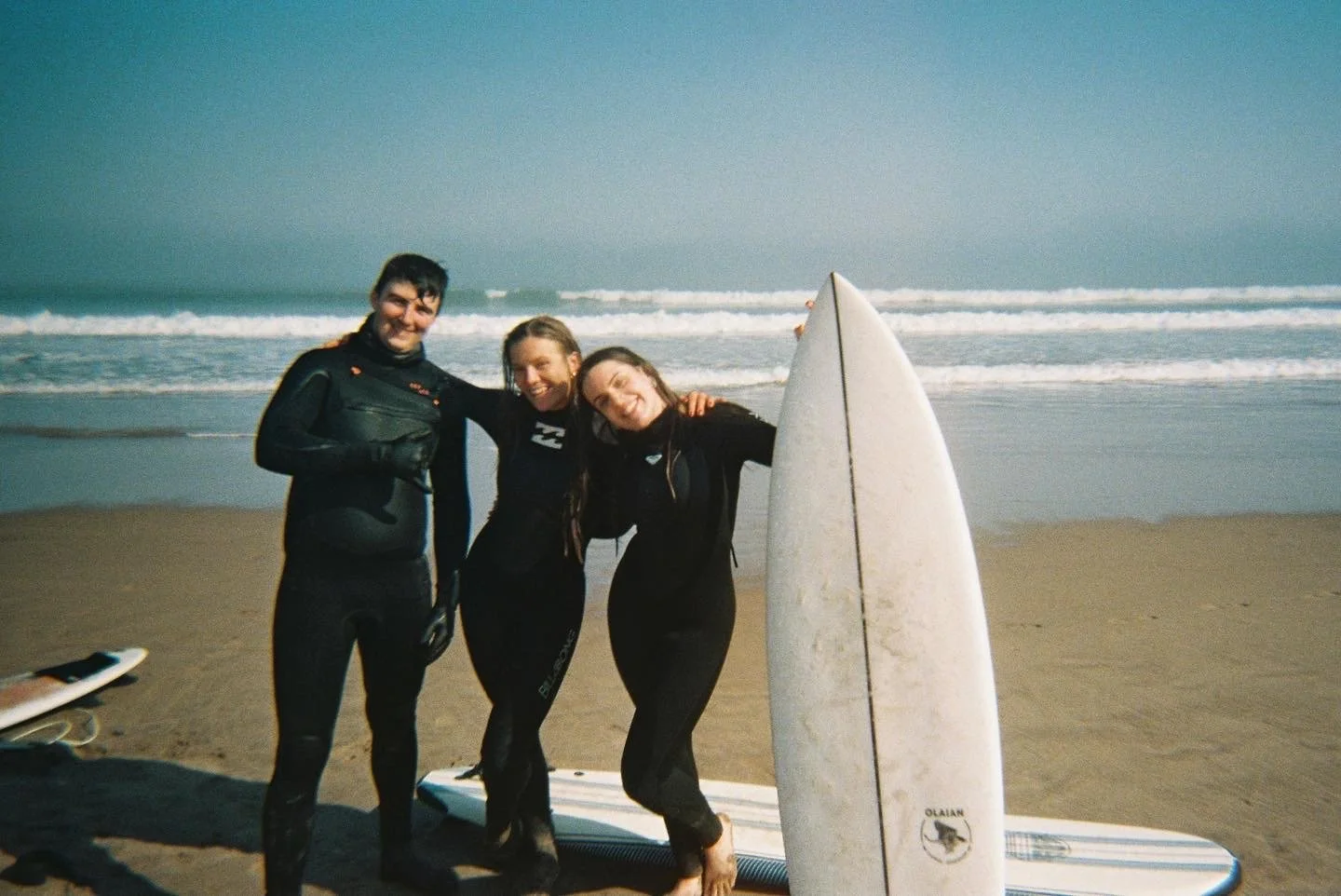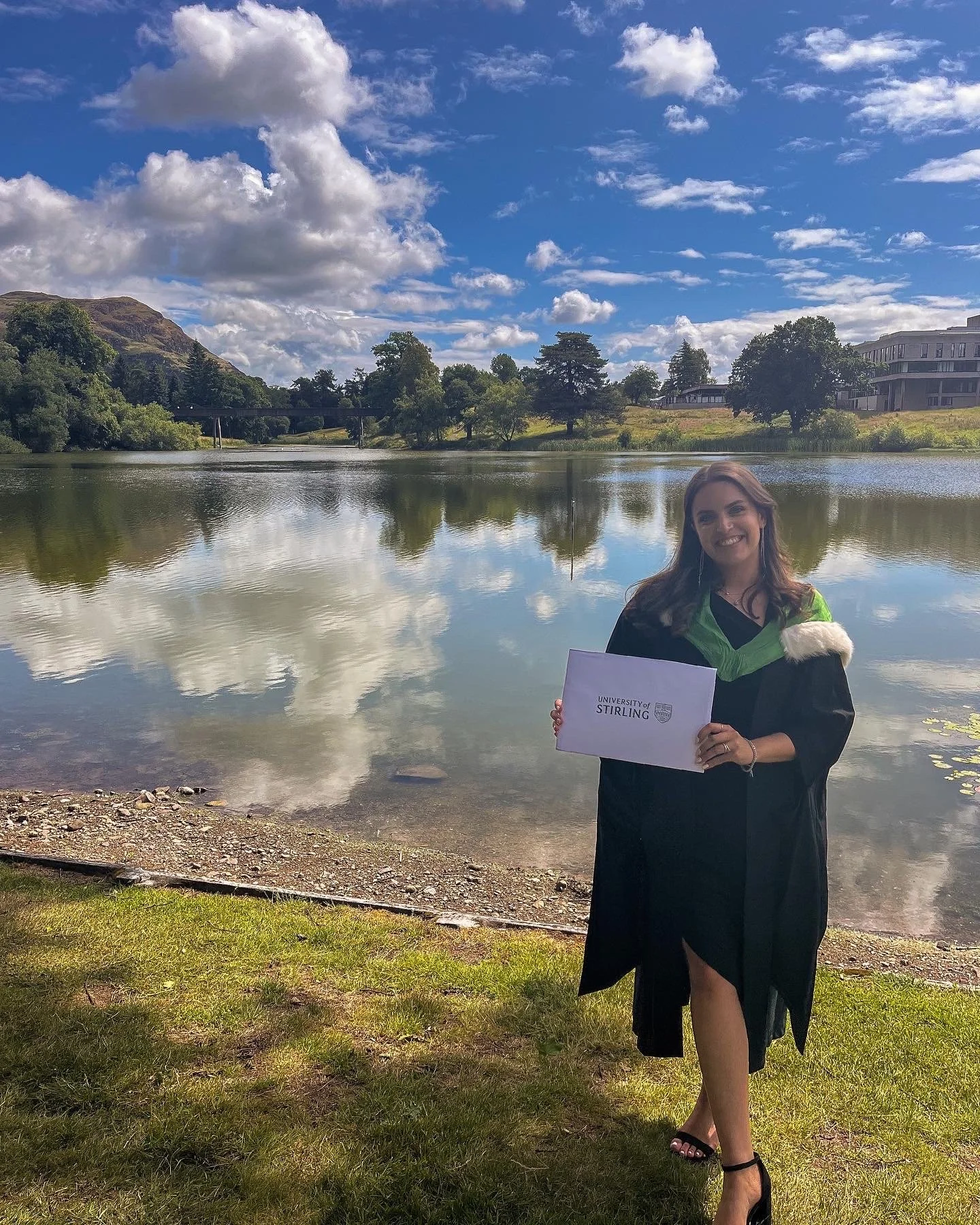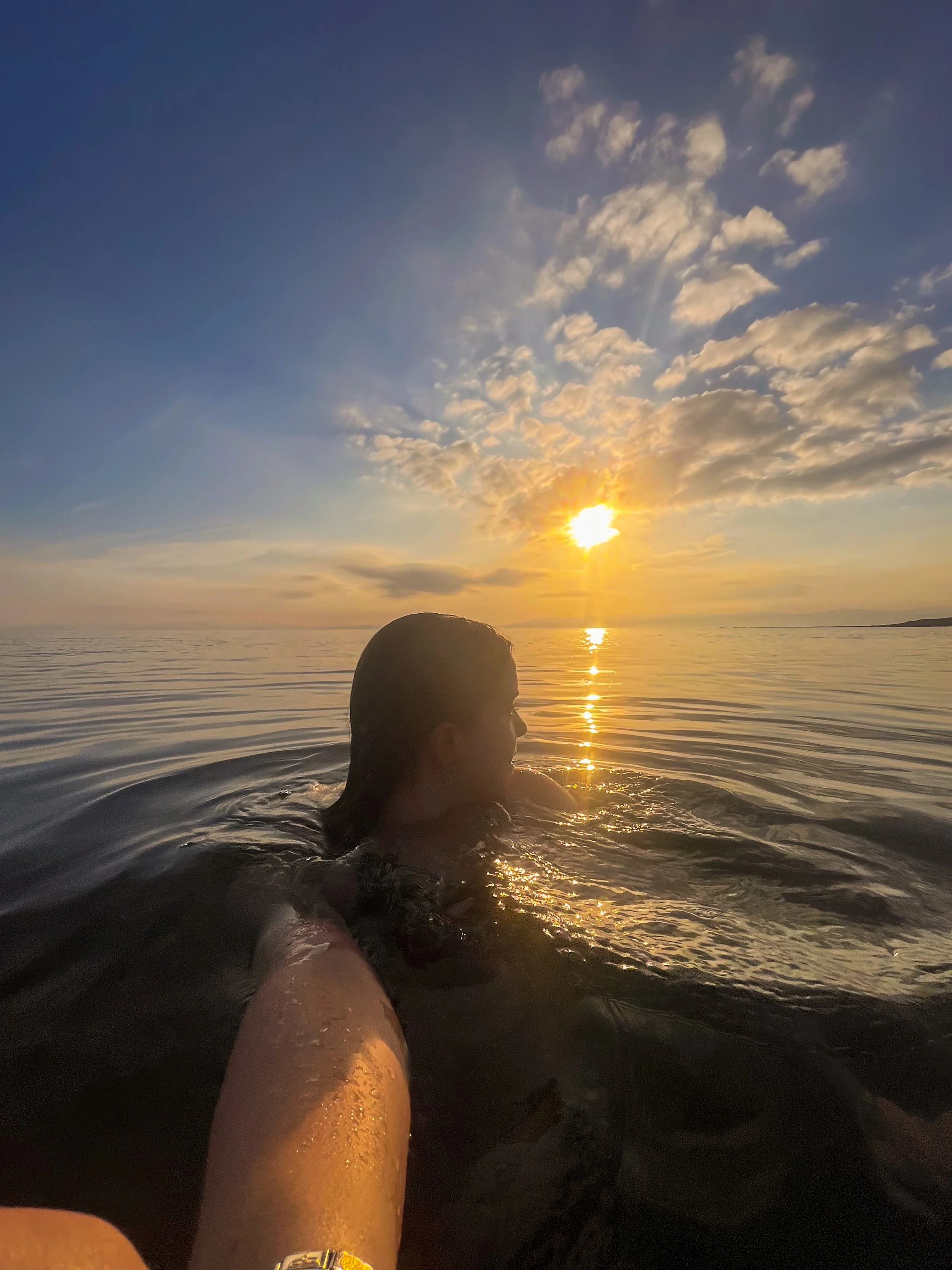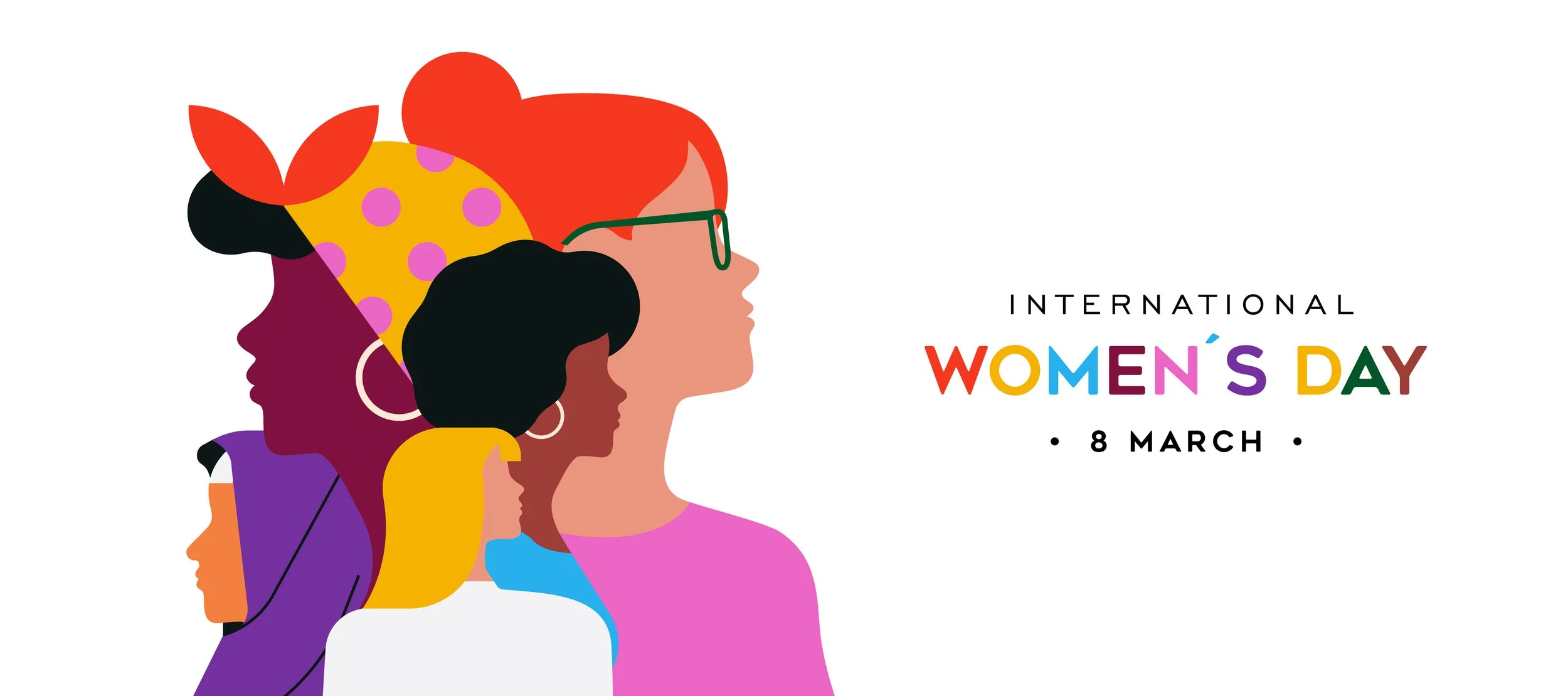Let’s get personal…
Let’s get personal… it’s about time I gave myself a proper introduction and got into how I ended up here!
I think it’s probably time I introduced myself properly and got into how I ended up here!
First of all…
Hi, I’m Emily (Em), and I’m the founder of Divine Sport Consultancy (DSC) xoxo
This is little Emily!
I grew up in sports my whole life, from Swimming, to Taekwondo, to Ballet to Horse Riding. I was lucky enough to be able to try out and go to as many sports clubs as I could possibly fit in, in a week!
I never really noticed any barriers in sport until I got a little bit older, but from the get go, I was in a pretty good position!
As I got a little older, I was still able to go to the sports I loved, but I started noticing a difference in the way I was treated compared to others (the boys to be specific!),
In Taekwondo, I would be given ‘safer roles’ to do if we were doing scenarios for self-defence; like ‘bar tender’, or cashier. While the boys got to jump off of walls and pretend to be super heroes, coming in to save the day and stop the bad guys (in the scenario anyway),
In swimming I started to become more self conscious and not want to go as much,
In Ballet, we were forced to wear tiny leotards and I would dread going to class,
This was when things began to change for me…
Dealing with the big P word…
As I became more aware of what being a girl meant, once my period came around I was anxious, worried and didn’t know what to do or what to expect. I didn’t want to do P.E. or go swimming in fear of leakages and being laughed at, let alone be forced to prance around in, nothing but a leotard. I didn’t really talk about this when I was younger, so little Emily would probably be terrified of who I’ve become!
I think as you get older, it becomes easier to talk about and there is less fear as you become used to your body (this has been the case for me at least and a lot of people I haven spoken to). However, this is one of the main issues/areas that I am now keen to change around the menstrual cycle and the idea of ‘female health taboo’. We should all have the chance to feel happy and comfortable in our bodies no matter what age we are of stage of growing up. If we can open the conversation early enough… there is no such thing as taboo!
Next up…
University undergraduate and masters degrees came next! I delved into my sport passion early in my undergrad, and then took a heavy focus on the menstrual cycle when studying my in Sport Psychology. This opened up my eyes to other women’s experiences, their struggles and barriers we are still facing; while also helping me learn a lot about myself too. I finally felt as though I had found my true calling, and decided that this was an area we needed to do something about… and I was going g to do it!
Concerns beginning… (TW: talking about hospital and medical conditions)
In my university years, I ended up being rushed to A&E with what was suspected as appendicitis, however, this was not the case. The first time this happened, no one had any answers and I was left to try and find them myself. With minimal backing from medical professionals it’s needless to say I didn’t get very far.
Fast forward to August 2023, I was rushed to A&E AGAIN with very scarily familiar symptoms. The doctor concluded that I had, had an ovarian cyst burst. I was more familiar with terms such as PCOS at this point so this seemed a little less scary, but also left me wondering what on earth I was suppose to do now. No scans or examinations were done at the time, so I was still in the dark. Fast forward to RIGHT NOW I am still trying to gain some form of diagnosis on what is happening in my body! Whether that’s PCOS or not… it has been years of struggle trying to get people to take what is happening to me seriously. I also suffer a lot from the mental part of my cycle as well as the physical. I have been informally diagnosed with Premenstrual Dysphoric Disorder (PMDD) which causes physical symptoms, but the real devil with this is the mental turmoil that comes with it. In the luteal phase, I become hopeless, to the point where I no longer want to carry on. Because of this, I now take Citalopram (an antidepressant used a lot with conditions linked to the menstrual cycle and menopause) daily to deal with these symptoms (some people may be able to take this only in the luteal phase, but since my cycle is irregular, this needs to be consistent). This is why I started DSC. So we can start talking about these things that are happening to us and are NOT NORMAL but they ARE normal to talk about! Far too many women and girls are told they have a ‘low pain threshold’ or ‘just take hormonal contraception’. These are the solutions we are asking for or that we need, so let’s change that narrative and start speaking to each other to share our stories and make others aware that female health is a priority!
I am now on a journey to figure out what works for my body, from both a medical and more holistic approach. Although, I take citalopram and anti-inflammatory’s to manage my symptoms, I also try to use as many natural, drug free supplements and products too. Check out our “who we work with” page to find out more about this.
Second time in A&E due to a burst cyst!
Starting DSC…
I made the decision I wanted to start something that was going to help women, and raise the profile on the menstrual cycle in sport… I just didn't quite know what it would look like!
Then, I decided on the name, what I wanted to do, and got to work!
Now here I am, currently 2 weeks, working with 3 top brands to spread the word and champion female health with workshops, business calls and appointments all happening too as well as opportunities to create material that will be educational and empowering. It’s amazing the difference a day makes… as they say!
I am most definitely only at the beginning of my journey…
But so far it’s looking pretty good! As a business, we will always strive for the best experience for our clients and community through regular CPD, reading and learning and also learning from all of you!
If you’d like to get involved, please get in touch below and check out our socials :)
We are also looking for women with personal experience to get in touch and share your stories with us, please email or message to get in touch!
International Womens Day
Happy International Women’s Day!!!
It’s that time of year again… HAPPY INTERNATIONAL WOMENS DAY!!!
What is International Women’s Day?
I have a love-hate relationship with this day, and I’ll get into the reasons why later on! But, it has to be said that this day is an amazing way for women to come together from all over the world, different backgrounds, sectors, ages, races… the list goes on… to celebrate being/identifying as a woman!
This years theme is “Invest in Women: Accelerate Progress” which looks to target economic disempowerment that women experience and aiming to close this gap.There is always an overarching theme of inspiring inclusion, but economic disempowerment is when there are gaps in access to education, health, financial services, and legal barriers to women's economic participation. This can in turn all negatively impact financial stability and a countries ability to achieve strong and sustainable economic growth (Christopherson et al., 2022). Basically… if we don’t allow women access to these areas, there cannot be a sustainable economy, THEY NEED US!
The journey to International Women’s Day as we know it today has been a bumpy one, starting back in the early 1900’s. Here’s a whistle stop tour:
In 1908 noise began in New York
Women demanded shorter hours and better pay as well as the right to vote
Too right!!
In 1909, the first National Women’s Day in the US was held.
In 1910 Clara Zetkin called for an International Women’s Day to be observed worldwide.
In 1911, the first IWD was held in Austria, Denmark, Germany and Switzerland on 19 March.
In 1913, amidst war campaigns, after many discussions, it was decided that IWD would be held on the 8th of March every year: this has been the case ever since!
Through 1914 women kept hosting rallies against the war and to show that they stood in solidarity as WOMEN!
In 1996, the UN began to announce themes for IWD beginning with “celebrating the past,Planning for the future’
Unfortunately in the 2000’s, there was a significant drop off in the topic of feminism and it appeared the world had moved on…
BUT… in 2001, the online platform for IWD was created and launched to re-energise the movement,
This platform is still around today proving us information about IWD and further gender topics.
Now when we think about IWD, we have already reached the 100 year centenary for the International day, as well as seeing a massive influence from social media around this,
So what is our story 2024 and beyond? And what is its place in sport?…
Okay so let’s talk a little bit more about the part that isn’t all smiles, sunshine and rainbows… I know, I’m a buzz kill…
Although IWD is extremely positive for bringing us together as a community, it is worth noting that for some, usually more commercial companies and businesses, this can be seen as a ‘tick box exercise’,
Although this will not be the case all the time, we do need to be aware of this to make sure we know who is doing the work all year round, as well as on the national day,
We want to see a REAL change for women and in women’s sport, so posting and championing for one day a year is NOT ENOUGH!
If you take anything from this blog, please challenge this and ask the question whether there is inclusivity work being done all year round to improve inclusion in general, but also in the sporting space for women!
So, with this being said, IWD is a really great place to:
Support other athletes, coaches, team mates, and sport professionals to allow us to have a solid support system in place even before beginning to try and instil change
Take the time to learn about the issues and barriers women are facing, this applies to both men and women! There will always be something to learn about and to learn how to support
Encourage team mates, coaches, colleges, friends, and family to talk about IWD and also to talk about the work that still needs to happen
I am also going to put to you, and ask that you actively decide to make one positive change in your personal or work life that will benefit women. This can be something as simple as sharing a post that is advocating for barriers that women are facing to spread the word; to bringing ideas to your colleges and boss around making the work place more inclusive. Let’s start making the change from US!
In conclusion…
I promise that is my small but important rant over! I hope you found this blog beneficial, please see below for our social links to join our networks and see more around IWD. If you would like to get in touch, please send us a message or email!
References and further reading
Game on: The unstoppable rise of women’s sport
Anstiss, S. (2022). Game on: The unstoppable rise of women’s sport. Unbound.
Tackling Legal Impediments to Women’s Economic Empowerment
Christopherson, K., Yiadom, A., Johnson, J., Fernando, F., Yazid, H., & Thiemann, C. (2022). Tackling Legal Impediments to Women’s Economic Empowerment. International Monetary Fund. https://www.google.com/url?sa=t&rct=j&q=&esrc=s&source=web&cd=&ved=2ahUKEwi2tM2XsuCEAxUz7rsIHaPXAs0QFnoECA4QAw&url=https%3A%2F%2Fwww.imf.org%2F-%2Fmedia%2FFiles%2FPublications%2FWP%2F2022%2FEnglish%2Fwpiea2022037-print-pdf.ashx%23%3A~%3Atext%3DConversely%252C%2520the%2520economic%2520disempowerment%2520of%2Cstrong%2520and%2520sustainable%2520economic%2520growth.&usg=AOvVaw2vAWgeKQWDocPaB4AkqUY-&opi=89978449
Global interest in women’s sports is on the rise
Dirango. (2021, January 29). Global interest in women’s sports is on the rise. Nielsen Sports. https://nielsensports.com/global-interest-womens-sports-rise/
History of international women’s day
International Women’s Day. (n.d.). History of international women’s day. https://www.internationalwomensday.com/Activity/15586/The-history-of-IWD
Endometriosis Awareness Month
Let’s talk about ENDO! #EndoAwareness2024 #EndTheSilence #EndoWarriors #EndoMonth #YellowForEndo
Let’s talk about ENDO!!!
A systematic inflammatory disease that affects millions of women but with not a lot of recognition and understanding around it…
A common issue that arises in the sport and health sector constantly is the lack of research, research funding and understanding around female health.
Endometriosis affects millions of women, however on average it can take a whopping 7.5 YEARS for a female to gain a formal diagnosis!
So what is this mystery, undiagnosed, and highly painful disease called endometriosis?
What is Endometriosis?
Endometriosis is a systematic inflammatory disease where tissue similar to the lining of the womb (endometrial-like lining) is found to be growing in external areas to the womb (where it’s not meant to be!) such as, but not limited to, the ovaries and the fallopian tubes. This lining can grow anywhere in the body, however it is most commonly found in these areas,
Endometriosis is commonly referred to and thought of as a ‘period’ disease, however this is not the case! Symptoms may worsen around menstruation as endometriosis tends to respond to our hormonal cycles, but endometriosis is present throughout our entire cycle and symptoms can also present throughout. This means that using things to stop periods may be useful for managing symptoms and pain, however, this will not cure the disease!
One of the most common ways we try to stop periods is hormonal contraception (HC) will dive a bit deeper into HC and it’;s relationship with endometriosis further in this blog, as this can be a common misconception amongst many of us that HC is the answer to endometriosis. This unfortunately is not the case, and there is no definite cure for endometriosis…
Symptoms and their management
〰️
Symptoms and their management 〰️
What are some common and less common symptoms to look out for?
Some common symptoms are as follows:
pain in your lower tummy or back (pelvic pain) – usually worse during your period
period pain that stops you doing your normal activities
pain during or after sex
pain when peeing or pooing during your period
difficulty getting pregnant/fertility issues
Fatigue
You may also have heavy periods. You might use lots of pads or tampons, or you may bleed through to your clothes.
For some women, endometriosis can have a big impact on their life and may sometimes lead to depression.
Abundant irregular menstruation
Blood in the stool
Diarrhoea or constipation
*see links to NHS website in above text
Some less common symptoms or accompanying symptoms may include:
Lightening crotch (this is when you experience a sharp pain in your vaginal/pelvic area that comes out of what seems no where. Often seen in women who are pregnant, but can also be a lesser recognised symptom of endo!)
Nausea
Dizziness and headaches
Hypoglycemia (low blood sugar levels)
Rectal bleeding
Hematuria during menstruation (large blood clots when menstruating)
Susceptibility to infections and allergies
Symptoms can be managed through various methods, some will work better for others, but to start off with the following may help you!
Pain killers. Such as anti-inflammatory’s (ibuprofen) can give temporary relief, your doctor may also be able to prescribe you stronger anti-inflammatory such as Mefenamic Acid which is usually prescribed for period pain but may help to reduce pain.
Good old hot water bottles! This is a low cost and effective method to relieve pelvic, stomach and back pain. It can also feel very comforting and can relax muscles which will help to reduce targeted pain!
Baths. Like hot water bottles these can help relax muscles and help anxiety and stress. It could also be recommended to add magnesium salts and essential oils to help relax your body and mind even further.
Ice packs. If hot water bottle don’t work for you, you might want to consider ice packs for areas of discomfort. This can act as a natural anti-inflammatory and numb the area for a while.
TENS machines. As you may have seen already, we work with Myoovi to give our clients discounts on the Myoovi TENS machine and also on their supplements. Myoovi works to trick the brain with electric pulses to tell it you’re not in pain! They also have Endometriosis specific supplements which may also help you manage your endo!
* see below for links to TENS machine and supplements, use DC: EMILYDIVINE for 10% off all products!
Okay… so now what?
So there isn’t a cure… what do we do now?
There isn’t an easy fix, but the first stage is definitely speaking to your doctor! This can be quite a daunting thought for women due to negative previous experiences. I know this is something I struggled with and ended up coming out of my GP practice crying multiple times after receiving, what felt like, little to no help,
There is the option to go to private health care, however this can be very unaffordable for a lot of individuals. So if this isn’t available to you, we need to go down the route of resilience and asking for more from our doctors! These are some things I found helpful when going to the GP with symptoms and being fearful I wouldn’t get any help:
Tracking and reporting my cycle. As well as anything I experienced which was out of the ordinary, and then having this available to show them in my appointment. I use Natural Cycles for this but you can use lots of different apps! Health on iPhone can be great, as well as Flo (it’s a lot harder for someone to tell you ‘you’re fine’ when you have proof you’re not!)
Finding a community out with the doctors surgery. What I mean by this, is that although you may sometimes not be over the moon with the help you want from your GP, you can find unbelievable support and tips from communities of women experiencing the same things as you! (that’s what we are also looking to do at DSC too! Check out our socials below)
Asking lots of questions!!! We tend to take on board medical professionals advice without question, which in some cases is absolutely fine! However, I would urge you to ask as much as possible about anything you are being prescribed, offered, or advised will help you. This can include possible side effects as there are normally A LOT of them! This way you are making sure you are 100% happy with your plan going forward and you will understand it a lot more too!
Being honest with your GP. 99% of the time, our GP’s want and are there to help us the best they can, I have found that being honest, letting my GP know that I’ve had negative experience with GP’s in the past, and telling them I’m worried I won’t get the right help, allows them to understand what you have already been through, be empathetic towards your journey, and also consider referring if they are unable to directly help.
If you have large areas/cysts of endometriosis, your doctor may suggest surgery as this cannot be treated with medication and will not go away on it’s own. This is something you will need to discuss with your doctor for available options.
With the symptom management tips above, medical advice, and plenty of rest and recovery, managing endometriosis can become a lot more achievable!
Endometriosis and Hormonal Contraception (HC)
Often it can be perceived that HC is ‘treatment’ for endometriosis, however, this is not the case. It can help manage symptoms caused by endometriosis, but it does not help the disease directly and does not mean it goes away,
HC can suppress the painful symptoms experienced with endometriosis which can be really beneficial for women if they are finding it debilitating, however, this can act as a mask and if you then decide to come off of HC you will then need to learn how to deal with the symptoms of endometriosis,
It is important you keep tabs on your endometriosis as if this reaches a stage of risk, this can have an effect on fertility, ovary, and organ health depending on where the endometriosis presents itself. We need to keep our bodies healthy not just thinking about fertility and future plans, but for our own current health and wellbeing!
Overall, HC can be useful for managing painful and debilitating symptoms from endometriosis, however this acts as a mask, and it does not stop growth or cure endo!
How to stay up to date…
Thank you for getting this far into our first blog! If you liked it and want to stay up to date you can subscribe to our newsletter and events list here:
and you can find our socials here to connect with us!
References and further reading:
Some guidance and tips were also used from @jen.dometriosis who is a fabulous creator and shares lots of useful things about endo on her instagram! Please give her a follow to keep up to date. You can find her instagram here:
Pathophysiology, diagnosis, and management of endometriosis
Horne, A. W., & Missmer, S. A. (2022). Pathophysiology, diagnosis, and management of endometriosis. BMJ. https://doi.org/10.1136/bmj-2022-070750
Endometriosis
NHS. (2022, September 5). Endometriosis. NHS choices. https://www.nhs.uk/conditions/endometriosis/
Endometriosis: Etiology, pathobiology, and therapeutic prospects
Saunders, P. T. K., & Horne, A. W. (2021). Endometriosis: Etiology, pathobiology, and therapeutic prospects. Cell, 184(11), 2807–2824. https://doi.org/10.1016/j.cell.2021.04.041
Endometriosis
World Health Organisation. (2023, March 24). Endometriosis. World Health Organization. https://www.who.int/news-room/fact-sheets/detail/endometriosis
Coming Soon…
Coming Soon…
You will find out tops tips, tricks and everything female health…
All in one place for your convenience…
Right here! Stay tuned :)


























